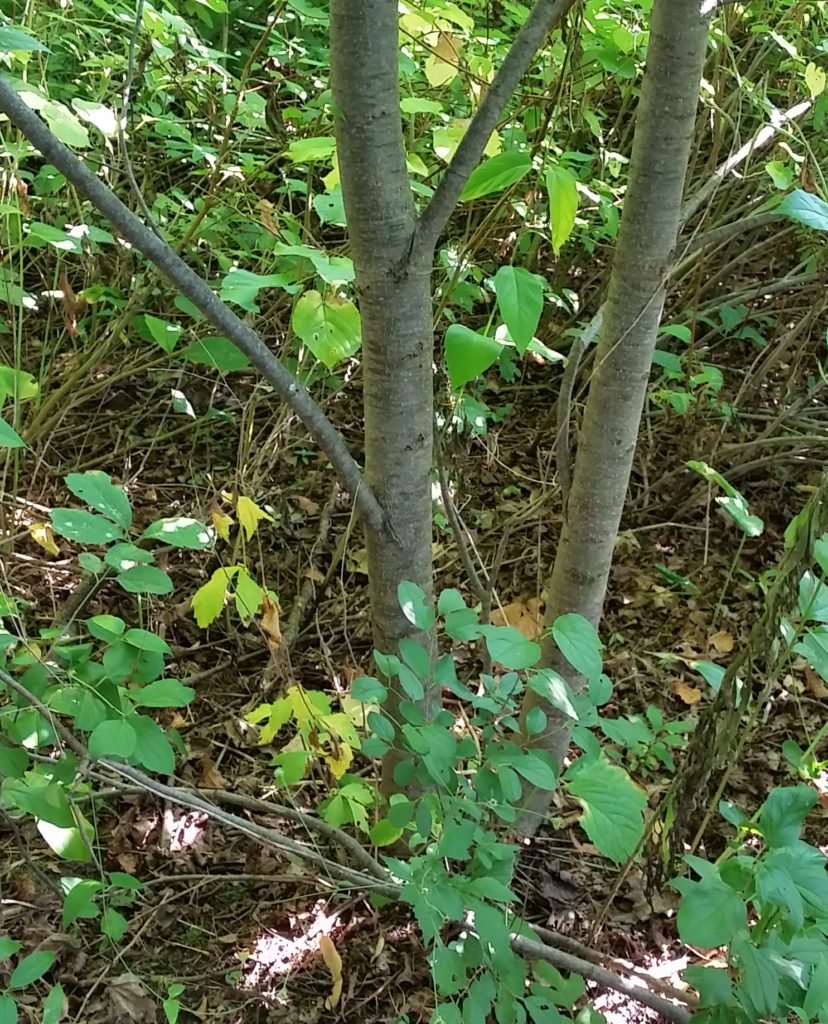European Buckthorn Rhamnus Catharica

European Buckthorn is an invasive shrub species from Europe which has established itself in many disturbed vegetation communities across southern Ontario. This species was often used in hedgerows and windbreaks, and was widely planted across the country. It tends to dominate understories because of its early leaf emergence and retention of leaves late into the fall which allow it to maximize growth and outcompete other understory plants with less resilient foliage. Heavy fruit production begins at a young plant age with each fruit containing three to four seeds and these fertility characteristics make buckthorn an aggressive and prolific competitor to many native shrub and herbaceous understory species.
Buckthorn has allelopathic properties and affects soils negatively by impacting the growth and survival of native species. This attribute allows Buckthorn to maintain dominance once it has invaded through direct vegetative competition with the seeds of native species. Buckthorn seeds are largely spread by bird droppings meaning that they have the potential to invade forest interiors, but are actually more successful in invading forest edges and communities with disturbed canopies. This may be because of the relatively short period between when birds eat the seeds and drop them because of the seeds’ natural diuretic properties. Birds that feed on the buckthorn berries may not travel far from edge communities before passing the seeds onto other edge communities.
A synthesis of buckthorn focused research showed that buckthorn impacts ecosystems through many pathways including the elimination of the organic matter in the litter layer, direct vegetative competition and allelopathy, potential facilitation of earthworm invasion, and changes in soil nitrogen. This invasive tree is a transformer species and very hard to control once established.

